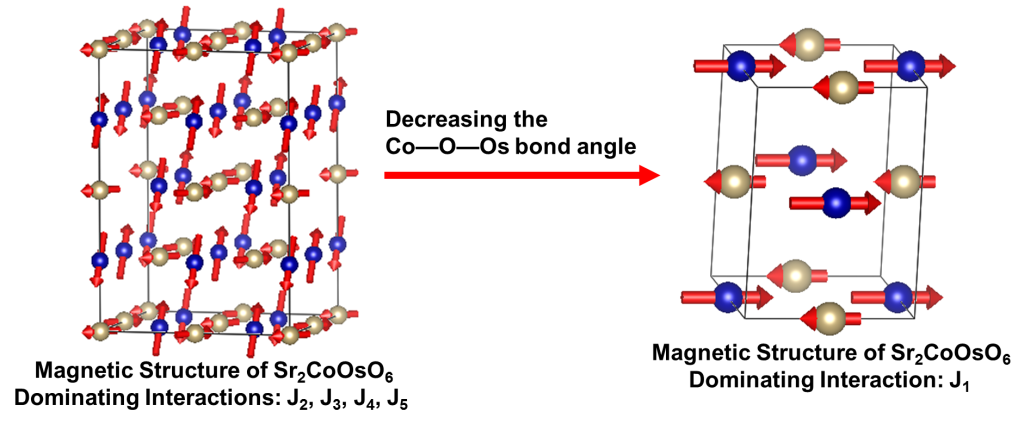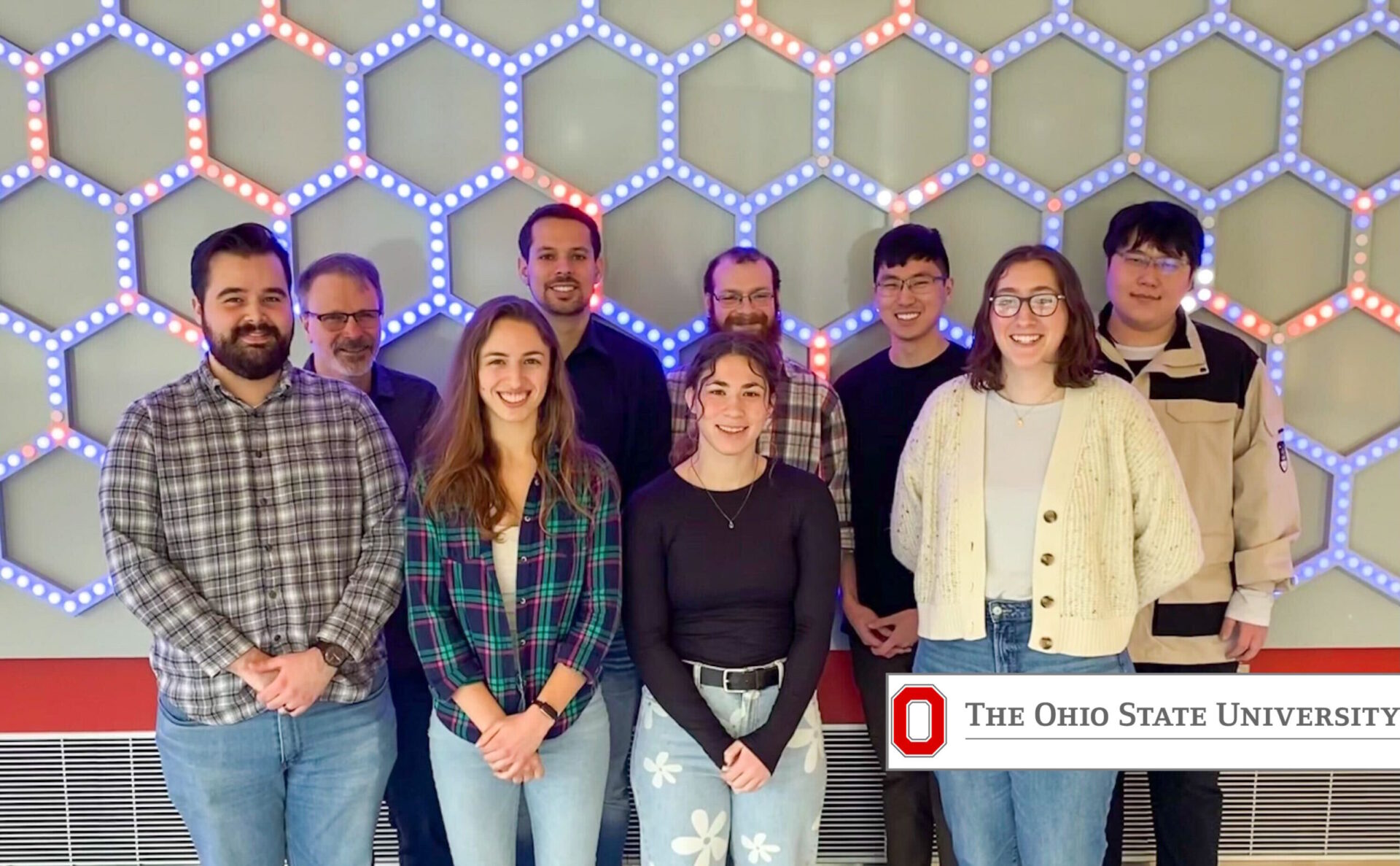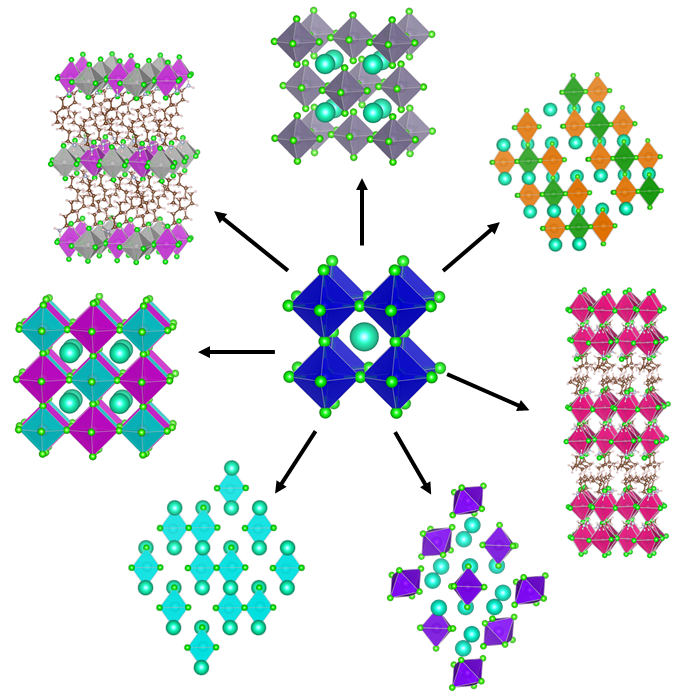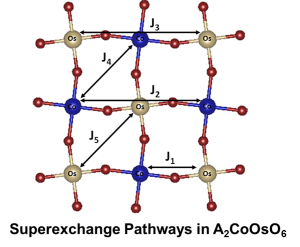Solid State Chemistry
Research efforts in the Woodward group are devoted to synthesis and characterization of solid state inorganic materials. Our end goal is to discover new materials with interesting and technologically useful physical properties. Students in the group will be exposed to a mixture of experiment and theory. Experimental techniques include solid state synthetic techniques, crystallography (x-ray, neutron and electron diffraction) and physical property measurements (optical, electrical, magnetic, dielectric, and catalytic properties). In addition, theoretical efforts are concerned with the application of existing theories in order to understand the relationship between elemental properties (electronegativity, ionic radius, electronic energy levels, etc.), crystal structure and physical properties.
Halide perovskites
Hybrid perovskites with formula AMX3 are semiconducting materials with a vast compositional range that show great promise for use in a wide variety of applications such as photovoltaic cells and LED’s. Over the last decade research has exploded in the area of halide perovskites due to the exceptional ability of lead-based perovskites to act as the absorbing layer in solar cells. Although their performance is impressive, the toxicity of Pb2+ remains an obstacle for implementation. Our interests are to synthesize and characterize new lead-free halide perovskite compounds and derivative structures. We focus on the synthesis of new semiconducting materials for solar absorbers, photoluminescent materials for light emitting applications, and multiferroic materials for a variety of applications. We are pursuing this goal by exploring the vast compositional space of perovskite-derivative structures afforded through size and charge substitution of the A, B, or X sites of the perovskite structure. Understanding how structural and electronic properties in these materials relate to each other is a major focus of our lab and enables the discovery of new functional materials.
5d Magnetism:
The need for half-metallic material with high Curie temperature for spin polarized transport generates a lot of interest in double perovskites. Double perovskites (A2BB′O6) serve as an ideal framework to study magnetic interactions between different transition metal ions, due to the variety of virtual electron transfers between overlapping metal orbitals which can take place through the ligand (superexchange interactions).
Possible superexchange pathways include short range B—B′ and long range B—B and B′— B′. These pathways vary in strength depending on the type of cation occupying these sites and the B—O—B′ bond angle. This provides an opportunity to make new magnetic materials through tuning of magnetic properties and increase magnetic ordering temperature by substitution of any cation position.
In particular, the magnetic ground state in 5d double perovskite has been shown to be sensitive to small structural perturbation. We aim to study how crystallographic structure affect the various superexchange interactions and the resulting magnetic properties in these 5d-containing materials.

Collaborations:
Our group collaborates with other researchers at OSU and all over the world. We are one of 9 groups at OSU that comprise the Center for Emergent Materials (CEM), an NSF Materials Research Science and Engineering Center (MRSEC). As part of the CEM we conduct interdisciplinary research with other groups in the Chemistry, Physics, and Materials Science departments here at OSU. In addition we collaborate with numerous other groups within the United States as well as researchers in Russia, Spain, France, England, Canada, Germany, India, and Australia.



